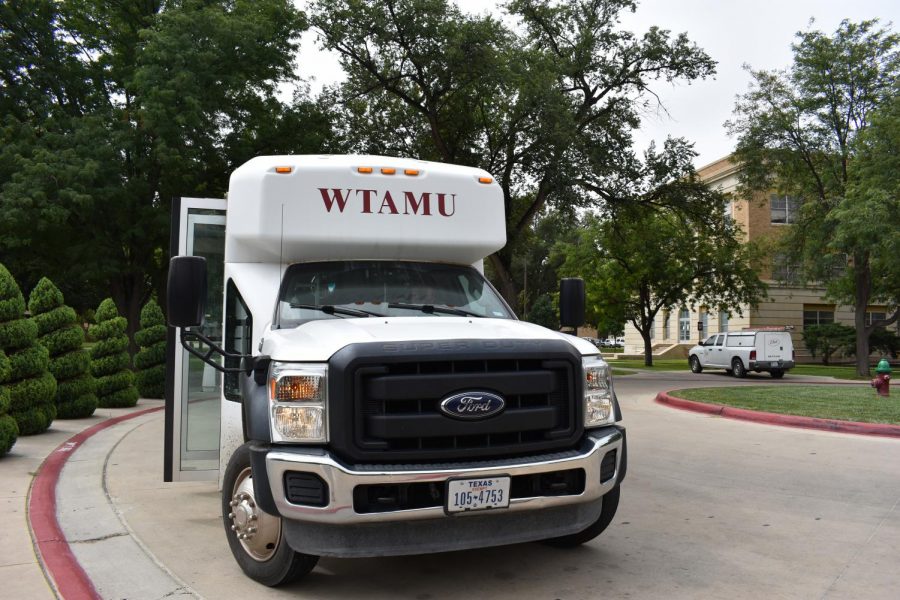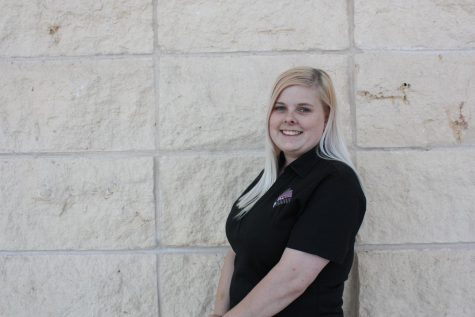The driving forces behind WTAMU
WTAMU shuttle bus outside the Jack B. Kelley Student Center
September 25, 2018
Just as the sun rises at 7 a.m., Dave Sims hops onto his shuttle to start his rounds. Sims is one of the six shuttle drivers at West Texas A&M University who ensures members of the WTAMU community get to their destinations on campus timely and effectively.
For many students and faculty members, these shuttle drivers are the first people they see in the morning and the last people they see in the afternoon. However, even though the shuttle drivers become familiar faces on campus, many people may not know that much about them.
Sims has been a driver at WTAMU for approximately seven years. When he first started working at the university, he also worked as a school bus driver for Canyon Independent School District in the mornings, and then came to the university in the afternoon. He has since retired from CISD after 30 years but still enjoys driving for WTAMU.
“It is really cool that we get to greet people and tell them good morning and those kinds of things, visit with them and ask them how they are doing,” Sims said.
Throughout his time here he has gotten to know people on campus from students to faculty members. As time has gone by he has started to recognize many of the people that have ridden on his shuttle.
“I have students that I wave at that don’t ride anymore, some of them are graduate students now…I see them every once in a while, and I stop and visit with them for just a second. It is just kind of fun to see how they are doing,” Sims said.
Sims believes that everything should be a social event. Talking with riders is one of his favorite things to do while driving. The same thing goes for afternoon shuttle driver Terry Rainey who believes it is important that the shuttle bus drivers give people a good experience while using the service.
“I have always been the type of person [who] wants to make a good first impression,” Rainey said, “I realized we are the first impression for the students here at WT.”
Rainey keeps maps of WT in his bus to so that students can figure out the campus and where the bus stops. He wants to be someone that can give a helping hand to the people he meets every day.
“A lot of them want to know where are the bus stops, where is this, where is that? Here is a map and I will draw you the bus stops on it so you will know exactly where we stop,” Rainey said.
Rainey is a retired truck driver of 40 years. He started as a shuttle driver at WTAMU last semester and even attended the university for a semester in 1969. One thing that Rainey enjoys is making people laugh.
“I love nothing better than to see people laugh, whether it is because somebody else did something, or something I said or did,” Rainey said. “…Even if they are laughing at me I don’t care, as long as they are laughing.”
According to Rainey one of the key things he picks out about students is when they have eye contact with him. To him eye contact is one of the most important things that students need to have now and in their future.
“I am a people person, I believe in looking people in the eyes, although a lot of times if I am trying to count how many are getting on the bus I miss some of them. Eye contact is something these students need to learn because it will be very useful to them in their future,” Rainey said.
The shuttle drivers work to make their rounds as effective as possible. According to Sims the shuttle bus is one of the best stress-free ways to get to class. To prevent downtime during shift changes every day, each driver’s time is staggered to ensure shuttle busses are constantly in route.
“Rather than having all those busses stop and having a bunch of people waiting…at least it’s staggered so we still have busses on the route. It is just a quicker process,” Jerry Faltinek, director of support services said.
This semester, the shuttle bus program has a shortage of drivers. According to Faltinek this shortage is primarily due to the lack of qualified drivers. Faltinek oversees the shuttle bus program. In order to be a driver for the program, drivers must have a class B commercial driver’s license with a passenger endorsement.
“You know, we just make it work, it’s fine. On Tuesdays and Thursdays if we are short it makes it kind of hard because the busses get really full,” Simms said.
The university has been using the Panhandle Transit to help get more busses in route. Even with the shortage, the shuttle bus service keeps riders as their top priority. For Sims and Rainey it is about providing a service to members of the WTAMU community.
“Just the opportunity to visit with people and to provide a service for the university,” Sims said.




